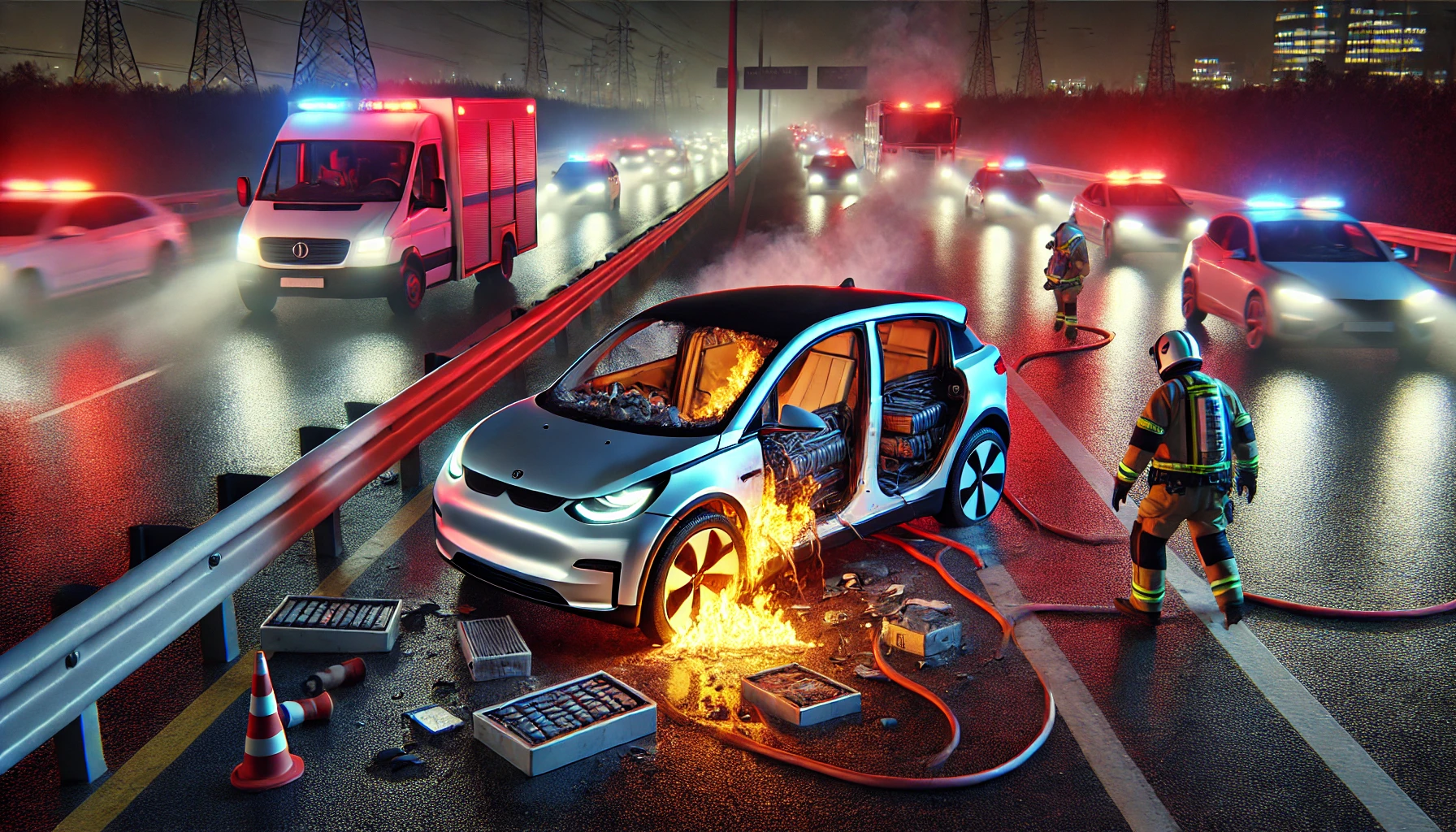
Highway Hazards: Understanding Electric Vehicle Accident Trends
Electric vehicles (EVs) have become a cornerstone of modern automotive innovation, celebrated for their contribution to reducing emissions and fostering sustainability. However, with their increasing presence on highways and city streets comes a need to address their unique safety considerations. While many assume that the technological sophistication of EVs makes them inherently safer, recent accident trends and studies tell a more nuanced story. This blog will explore these accident trends, comparing EVs with traditional vehicles, and highlight key findings that every driver and policymaker should know.
The Rapid Growth of Electric Vehicles
The last decade has seen an unprecedented surge in the adoption of EVs. Governments worldwide have incentivized their use through subsidies and tax breaks, aiming to reduce carbon footprints and promote cleaner energy. The global EV market is expected to continue this growth trajectory, with projections suggesting that EVs will comprise a significant portion of all vehicles on the road by the next decade.
Key Market Players
Leading companies like Tesla, Nissan, and more recently, traditional automakers such as Ford and General Motors, have invested heavily in developing EV models that appeal to different market segments. Tesla, for instance, has popularized EVs through sleek design, powerful performance, and advanced software, setting a high standard for what electric cars can be.
The Promise of Safety
One of the strongest selling points for EVs has been their potential safety benefits. With features like lower centers of gravity due to heavy battery packs, EVs often exhibit reduced rollover risk. Additionally, advanced driver-assistance systems (ADAS) have become standard, promising safer driving experiences. However, reality often tempers these expectations, as unique safety issues and accident trends continue to emerge.
Statistical Analysis of EV Accidents
While some studies show that EVs are less likely to result in fatal accidents due to built-in safety features, the nature and causes of accidents involving EVs differ from those of traditional vehicles.
Accident Data Comparison
According to data from the National Highway Traffic Safety Administration (NHTSA) and various independent studies, EVs have been shown to have both higher and lower risks depending on the type of incident. For example:
- Frontal Impact Collisions: EVs tend to fare well in frontal impact tests due to reinforced frames designed to protect battery packs.
- Single-Vehicle Accidents: Some studies indicate that EVs have a higher rate of single-vehicle accidents, potentially due to their rapid acceleration capabilities.
Contributing Factors to Accidents
The primary factors contributing to EV accidents often include:
- High Torque and Acceleration: EVs can achieve full torque almost instantly, which can surprise drivers unaccustomed to this level of responsiveness.
- Silent Operation: While advantageous for noise reduction, the near-silent operation of EVs increases the risk of pedestrian accidents, particularly in urban settings.
- Battery Fires: Though rare, incidents involving battery fires tend to be more severe due to the unique properties of lithium-ion batteries.
Common Accident Scenarios Unique to EVs
Rapid Acceleration and Driver Control
EVs like the Tesla Model S and Model 3 are known for their rapid acceleration, sometimes capable of reaching 60 mph in under three seconds. While this is impressive, it can lead to control issues, particularly for drivers transitioning from traditional vehicles.
Fire Risks and Battery Failures
When an EV is involved in a severe collision, the risk of a fire stemming from the battery pack is a concern. Lithium-ion batteries can undergo a process called thermal runaway, where a damaged cell overheats and triggers a chain reaction. This type of fire is difficult to extinguish and can reignite even after it appears to be under control.
Silent Operation and Pedestrian Safety
The lack of noise generated by an EV at low speeds can be dangerous for pedestrians and cyclists who rely on auditory cues. Regulations now require EVs to emit artificial sounds when traveling at low speeds, but compliance and effectiveness vary among manufacturers.
How EV Accidents Compare to Conventional Cars
The overall data suggests a mixed picture:
- Lower Fatalities: Some EV models show lower fatality rates in collisions, credited to their strong structures and advanced safety systems.
- Higher Repair Costs: While EVs may not always result in more severe accidents, their repair costs post-accident are often higher due to the specialized components involved.
Specific Safety Features and Their Impact
- Reinforced Battery Packs: Battery placement within a reinforced frame can protect passengers during impacts but adds challenges in terms of rescue and extraction for emergency services.
- Autonomous Driving Features: Systems such as Tesla’s Autopilot have been linked to a range of incidents, highlighting the importance of driver education and system limitations.
Policy and Regulatory Implications
Governments and regulatory bodies are beginning to address these new safety considerations.
Existing Regulations
- Battery Safety Standards: Policies now require robust testing of battery systems for durability and fire safety.
- Noise Regulations: The EU and the U.S. mandate that EVs emit sounds at low speeds to protect pedestrians.
Proposed Changes
- Enhanced Safety Standards for Autonomous Features: There is growing advocacy for stricter oversight on the rollout of semi-autonomous and fully autonomous driving technologies.
- Training Requirements for EV Drivers: Educating drivers on the unique characteristics of EVs could reduce accident rates significantly.
The future of electric vehicles is promising, but the nuances of their safety profiles must not be overlooked. Understanding accident trends and addressing them with proactive measures will be essential as we transition further into an electric age. Continued research, better regulations, and driver education will help bridge the safety gap and ensure that EVs remain not only a sustainable choice but a safe one.
